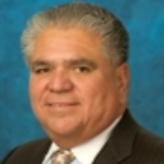Located within the Department of Veterans Affairs, the National Cemetery Administration (NCA) maintains military cemeteries across the United States for the burial of veterans and their family members. The cemetery system dates back to the Civil War era, and today comprises 135 cemeteries. Although the NCA has enjoyed a fairly quiet and innocuous existence, the office, along with a few of its cemeteries, came under fire in late 2007 for policy decisions and questionable actions and again in 2014.
National Cemetery Administration Launches Project to Index Monuments
(by Steve Paul Johnson, Cemetery Column)
Facts about the National Cemetery Administration
(PDF)
Some local contractors perform work for individual national cemeteries. These generally include gardeners and maintenance companies, as well as manufacturers of headstones and markers.
- Table of Contents
- Overview
- History
- What it Does
- Where Does the Money Go
- Controversies
- Suggested Reforms
- Comments
- Leave a comment

Ronald E. Walters, a career employee in the Department of Veterans Affairs (VA), took over as interim under secretary for memorial affairs on June 23, 2014. He is currently the acting under secretary for memorial affairs. The National Cemetery Administration (NCA) maintains military cemeteries across the United States for the burial of veterans and their family members. The cemetery system dates back to the Civil War era, and today comprises 135 cemeteries.
Walters, the son of a Coast Guard veteran, earned a B.A. from Georgetown University in 1984 with a dual degree in Government and English Literature and started at the VA the following year as a budget analyst. He went on to earn a master’s in public administration from George Washington University in 1986 and a Ph.D. in political science from Johns Hopkins in 2002.
Walters also worked for a time in the Office of Management and Budget. In 2003, he was named associate chief financial officer for budget and planning in the Office of Personnel Management. Walters moved to the VA as the National Cemetery Administration’s deputy under secretary for finance and planning in July 2006. In January 2009 he was named principal deputy under secretary. He took over as acting chief of the NCA in 2014 when its previous leader, Steve Muro, retired under a cloud.
Since becoming boss at NCA, Walters helped oversee the expansion of the national cemetery system, getting the threshold for new sites cut from 175,000 veterans within a 75-mile radius to 80,000 within that area. He also approved the first monument at a national cemetery for LGBT veterans and in 2016 implemented a policy prohibiting the flying of the Confederate flag at permanent flagpoles in national cemeteries.
Walters is also an instructor in political science at the University of Maryland-Baltimore County.
-Steve Straehley
To Learn More:
Confederate Flags Will Be a Much Rarer Sight at Federal Cemeteries After Urging From California Congressman (by Sarah D. Wire, Los Angeles Times)

Steve L. Muro, who was named Acting Under Secretary for Memorial Affairs on January 21, 2009, has spent more than 30 years working for the nation’s military cemeteries, rising from auto mechanic to acting head of the National Cemetery Administration.

- Latest News
- D.C. Public Schools will Teach all Second-Graders to Ride a Bike
- New Rule in Germany Limits Sales of Sex-Themed E-Books to 10pm to 6am
- What Happened to the 6-Year-Old Tibetan Boy the Chinese Government Kidnapped 20 Years Ago?
- U.S. Ambassador to Turkey Photoshops his Hair Color to Mock Turkish Mayor
- Mystery Artist Calls Attention to Unfixed Potholes by Drawing Penises around Them
Located within the Department of Veterans Affairs, the National Cemetery Administration (NCA) maintains military cemeteries across the United States for the burial of veterans and their family members. The cemetery system dates back to the Civil War era, and today comprises 135 cemeteries. Although the NCA has enjoyed a fairly quiet and innocuous existence, the office, along with a few of its cemeteries, came under fire in late 2007 for policy decisions and questionable actions and again in 2014.
National Cemetery Administration Launches Project to Index Monuments
(by Steve Paul Johnson, Cemetery Column)
Facts about the National Cemetery Administration
(PDF)
Some local contractors perform work for individual national cemeteries. These generally include gardeners and maintenance companies, as well as manufacturers of headstones and markers.
Comments

Ronald E. Walters, a career employee in the Department of Veterans Affairs (VA), took over as interim under secretary for memorial affairs on June 23, 2014. He is currently the acting under secretary for memorial affairs. The National Cemetery Administration (NCA) maintains military cemeteries across the United States for the burial of veterans and their family members. The cemetery system dates back to the Civil War era, and today comprises 135 cemeteries.
Walters, the son of a Coast Guard veteran, earned a B.A. from Georgetown University in 1984 with a dual degree in Government and English Literature and started at the VA the following year as a budget analyst. He went on to earn a master’s in public administration from George Washington University in 1986 and a Ph.D. in political science from Johns Hopkins in 2002.
Walters also worked for a time in the Office of Management and Budget. In 2003, he was named associate chief financial officer for budget and planning in the Office of Personnel Management. Walters moved to the VA as the National Cemetery Administration’s deputy under secretary for finance and planning in July 2006. In January 2009 he was named principal deputy under secretary. He took over as acting chief of the NCA in 2014 when its previous leader, Steve Muro, retired under a cloud.
Since becoming boss at NCA, Walters helped oversee the expansion of the national cemetery system, getting the threshold for new sites cut from 175,000 veterans within a 75-mile radius to 80,000 within that area. He also approved the first monument at a national cemetery for LGBT veterans and in 2016 implemented a policy prohibiting the flying of the Confederate flag at permanent flagpoles in national cemeteries.
Walters is also an instructor in political science at the University of Maryland-Baltimore County.
-Steve Straehley
To Learn More:
Confederate Flags Will Be a Much Rarer Sight at Federal Cemeteries After Urging From California Congressman (by Sarah D. Wire, Los Angeles Times)

Steve L. Muro, who was named Acting Under Secretary for Memorial Affairs on January 21, 2009, has spent more than 30 years working for the nation’s military cemeteries, rising from auto mechanic to acting head of the National Cemetery Administration.

- Latest News
- D.C. Public Schools will Teach all Second-Graders to Ride a Bike
- New Rule in Germany Limits Sales of Sex-Themed E-Books to 10pm to 6am
- What Happened to the 6-Year-Old Tibetan Boy the Chinese Government Kidnapped 20 Years Ago?
- U.S. Ambassador to Turkey Photoshops his Hair Color to Mock Turkish Mayor
- Mystery Artist Calls Attention to Unfixed Potholes by Drawing Penises around Them






Comments